"[...] The book is beautifully illustrated with detailed line drawings and photos which all help the reader to build up a vivid picture of what these plants look like. There is much useful information associated with the illustrations, which highlight important features at the family level and below, considerably aiding identification. [...] Minor issues apart, this book is an excellent primer to plant families which are well known as being some of the most difficult to identify. It should definitely have a place on the botanical bookshelf."
– David A. Simpson, Kew Bulletin 73(19), 2018
"[...] Generously illustrated and carefully organized, this guide may be a welcome addition to the library of any botanist, professional or amateur. Despite inevitable limitations inherent in any book that tries to usefully summarize global diversity of grasses, sedges, and similar plants, the author has designed a primer that can serve as a practical introduction to these plants that are notoriously difficult to identify. I strongly recommend it to anyone who wants to become adept at identification of grasses and grass-like plants."
– Amy Boyd, Department of Biology, Warren Wilson College, Asheville, North Carolina, USA, Plant Science Bulletin Vol. 63 (1): 51-2 (Spring 2017)
"[...] Despite its broad scope, his treatment is nevertheless of great value to British and Irish botanists [...] [The author] gives a good explanation of the specialised terminology used to describe the parts of the grass flower, and goes into the process of identification in such a way that it dispels any notion that grasses are particularly difficult to identify. The illustrations are of a uniformly high standard [...] They include exploded drawings of the floral parts that are much more accessible than the style of drawing one encountered in such handbooks as Hubbard. [...] Although grasses are hard to photograph well in close-up, the section of colour plates following p. 408 is delightful and provides images against a black background, emphasising the nervature and translucency of the parts. [...] As a teaching aid it should prove useful on field courses, due to its well thought out format with 'recognition notes' for the main tribes [...]"
– John Edmondson, New Journal of Botany, Vol. 6(2-3), pp. 117-8 (2016)
"From the moment I took this book from its package, I loved it! [...] I am sure that any interested non-professional can successfully use this book. The author emphasizes that “this book is intended as a guide to pursuing practical plant identification” and he has certainly made this possible through clarity of the treatments and his truly outstanding illustrations and photographs.[...]"
– Janice C. Swab, Australian Systematic Botany Society Newsletter 167, June 2016
"[...] After carrying this book around with me for two weeks during my four-hour commute to work, I can report that the book is the perfect size to hold and read. The size and the binding allow the reader to refer back easily to plates and figures described in the text. The paper and the print quality is excellent, with the overall product looking well laid out. It makes you want to flick through the book to enjoy the illustrations because the highlight of this book is the wealth of exquisite illustrations and plates with the clear and concise descriptions which accompanies them. This is a book I have enjoyed reading and it has inspired me to have a go at identifying this challenging group of plants. I recommend this book to anyone who wants to take up this challenge."
– Bruce McGinness, Growing Australian, June 2016
"Grasses are notoriously difficult to identify, ask any botanist. Having evolved along the same basic physical plan and superficially resembling one another, grasses must be identified by studying tiny structures that cannot be observed without magnification. By default, this has traditionally been left to experts, who still have difiiculty separating species. Because of the exactitude involved, written descriptions in botanical atlases and floras are written by and for experts. Most laypeople turn away in bewilderment, wishing that some interpretive guide existed that could help to decipher the code.
And now one does! Ian Clarke's book, Name Those Grasses; Identifying Grasses, Sedges and Rushes, helps those without specialized knowledge use identification manuals and botanical keys, and clarifies the identification of grasses and grass~like plants. Stuffed with practical information, the book is designed, written, and profusely illustrated with ink/scraperboard drawings and color photographs by Clarke. He knows his topic well, having worked in the botanical field for more than 40 years, first for the University of Melbourne School of Botany and later for the Royal Botanic Gardens Victoria's identification and information services. He has a longtime interest in botanical illustration and has served on the selection panel for many botanical art exhibitions.
Clarke's passion for his topic shines through as he generously and patiently explains botanical nomenclature, structures, and processes through text and illustration. He seems to have a genuine interest in increasing the reader's knowledge and understanding. The book is incredibly well thought-through, using a logical order to lead the reader through ever-increasingly specific topics. Clarke's clear, direct writing style is well-matched by his excellent drawings, which are both precise and
attractive.
[...]
My first assumption in picking up the book was that it was a field guide to Australian species. I was delighted to find that it is so much more than that. Its purpose is to aid in navigating the complicated topic of regional botanical atlases, information that is international in its scope, I highly recommend it to students, educators, agricultural/liorticultural professionals, naturalists, artists – anyone who is studying botany of any kind, most particularly, the tangled topic of grasses."
– Amelia Hansen, Journal of Natural Science Illustration, 48(2), 2016

















![Handbook on the Morphology of Common Grasses [of India] Handbook on the Morphology of Common Grasses [of India]](http://mediacdn.nhbs.com/jackets/jackets_resizer/22/226419.jpg)








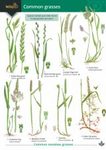
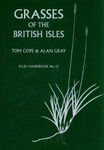
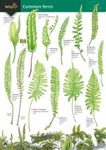
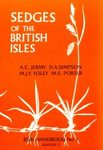
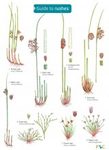


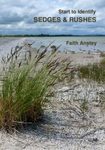
![Start to Identify Grasses [enlarged edition]](http://mediacdn.nhbs.com/jackets/jackets_resizer_medium/24/249274.jpg?height=150&width=112)